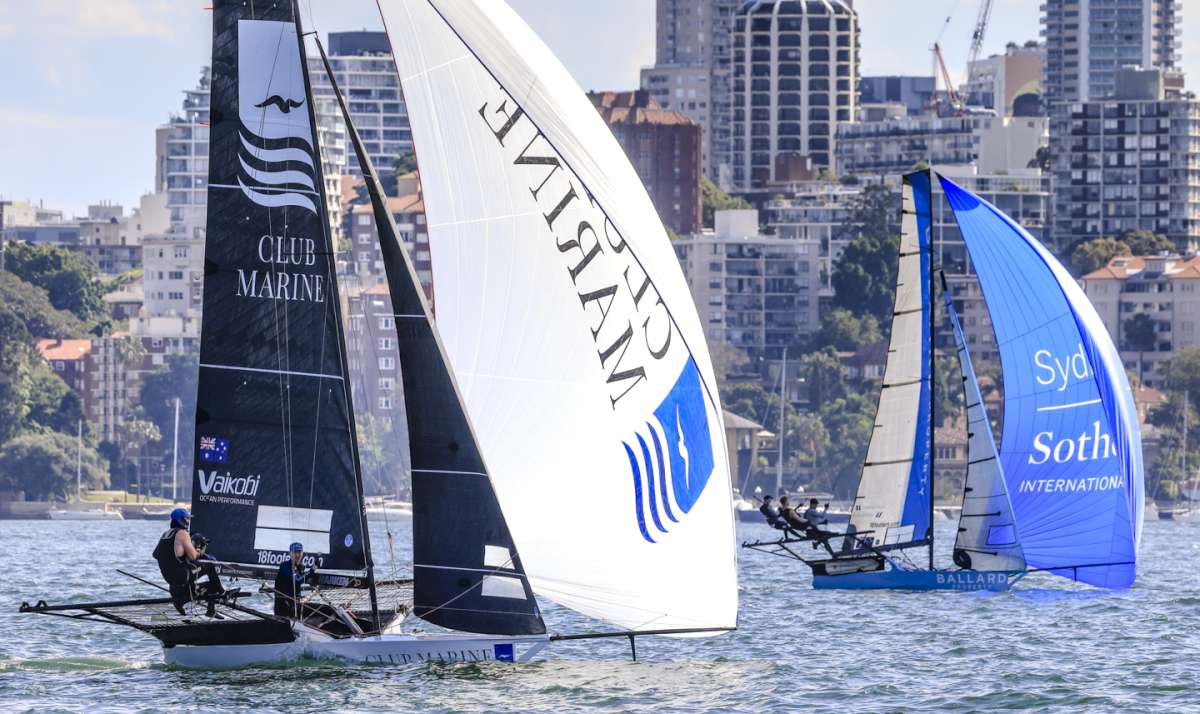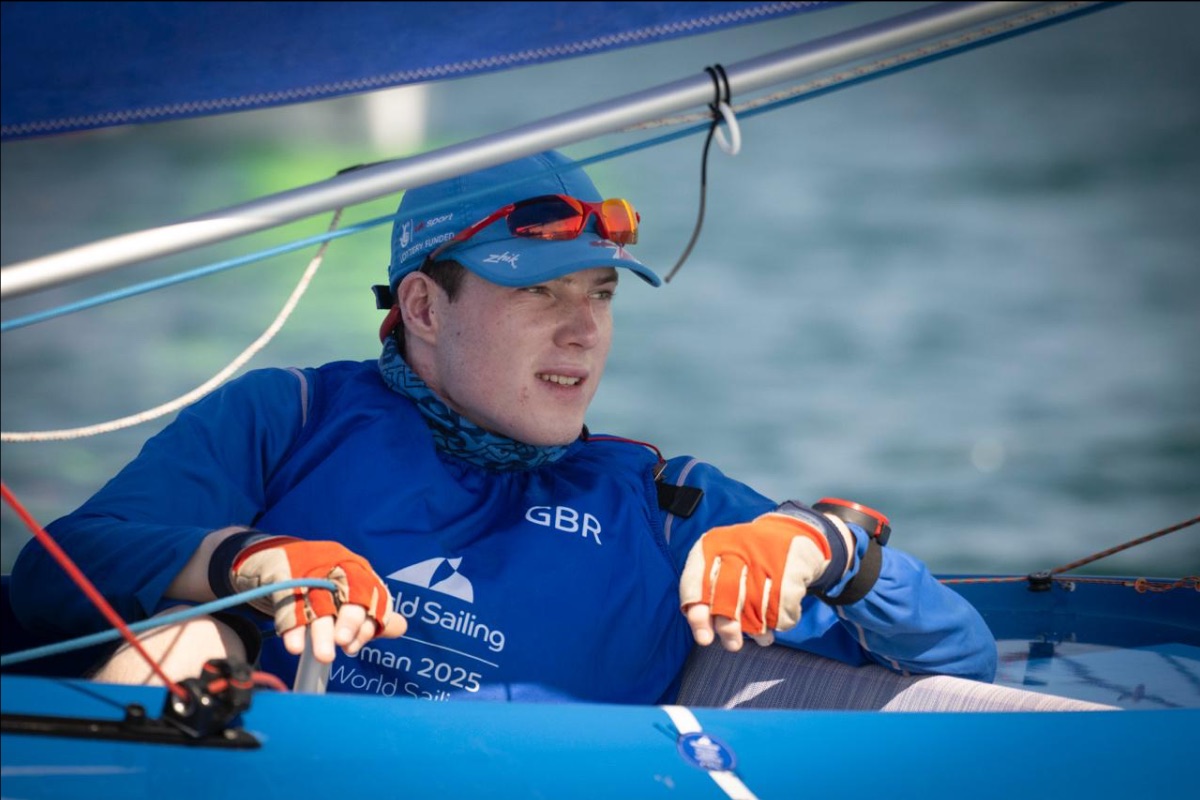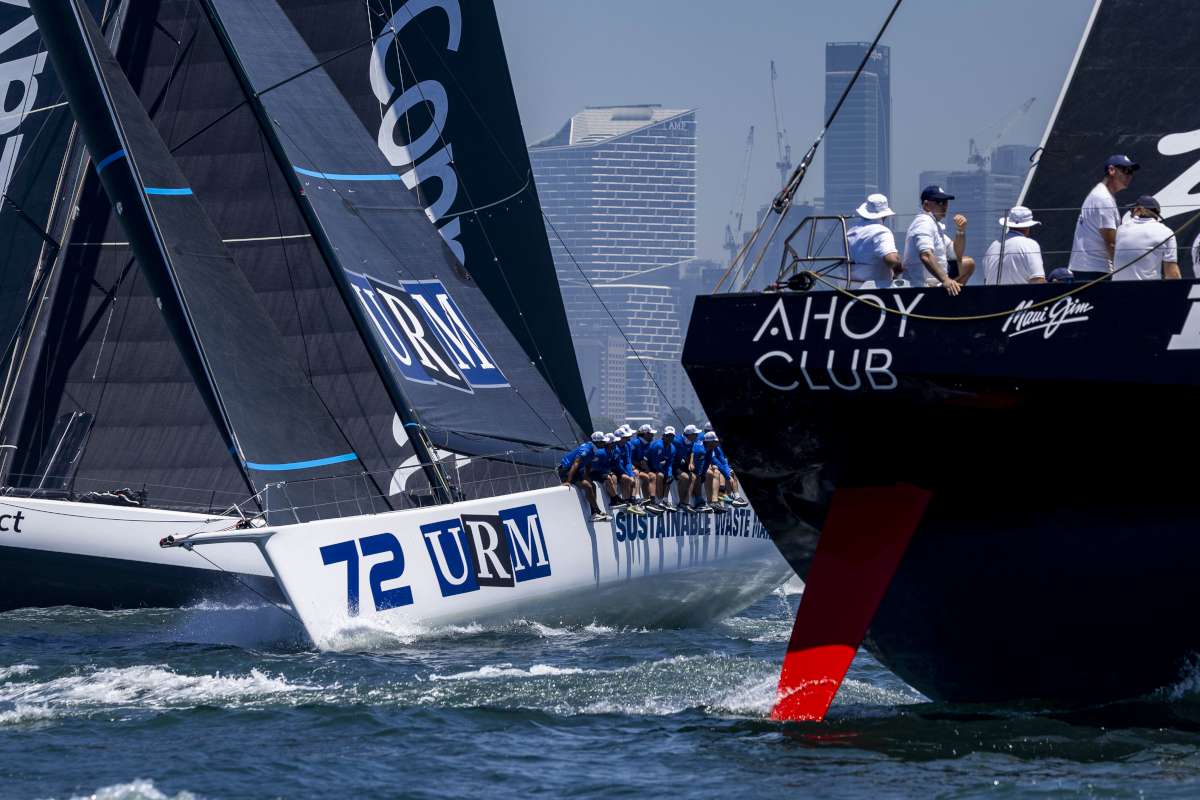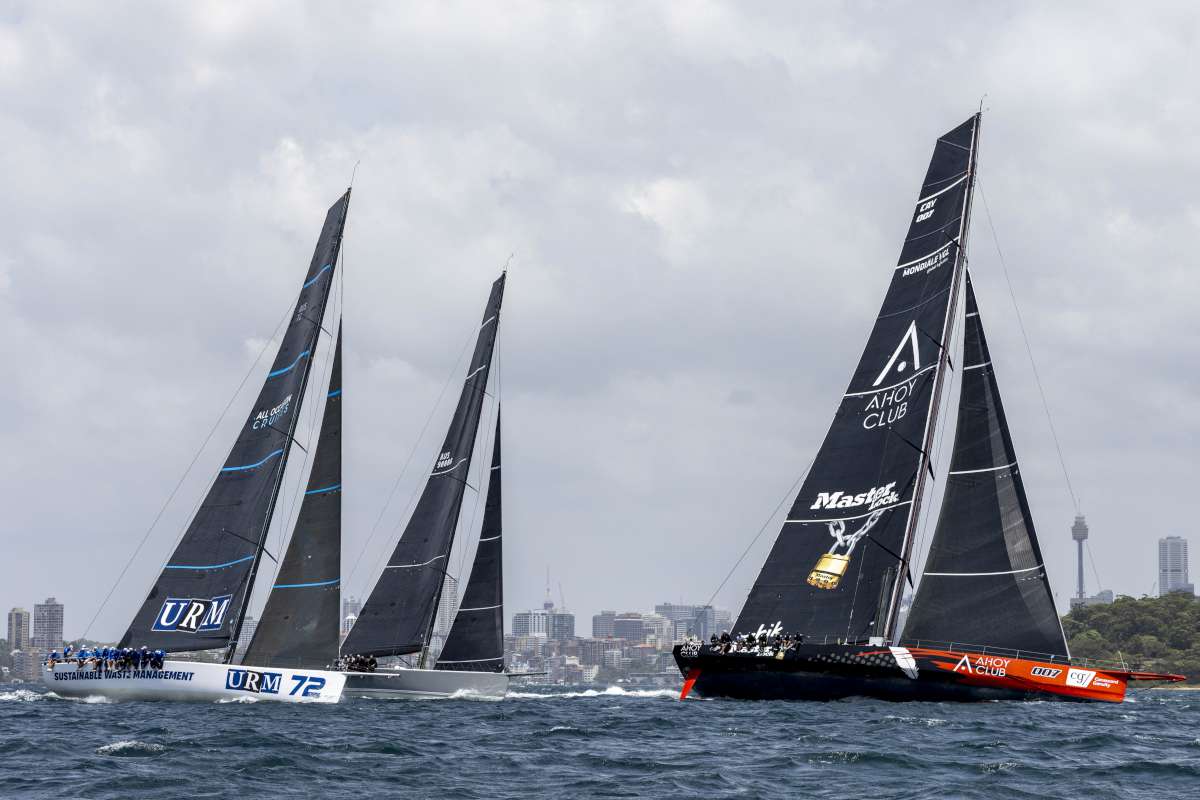I must be really showing my age; the other day a lovely young lady stood up and offered me her seat on the tram. After I got home a long look in the mirror confirmed the sad fact, time has finally caught up.
My once finely-tuned body has lost its strength, flexibility and ability to repair itself after what would have once been only a minor injury. I had to face it: I am old.
Having made this sad admission, while getting the boat ready for our big trip along the East coast, now high on the list was a new 12 volt anchor windlass. The other part of the justification was safety, as we sail short-handed. While I could still haul in the anchor, somewhat slower these days using a combination of muscle and the old Vetus manual winch, it would be a much tougher task for my wife. it is also possible I could become ill or injure myself and she needed the means to bring the anchor up without outside assistance.
A new electric windlass would also encourage me to anchor in slightly deeper water than we do at present,
an important consideration for many island anchorages.
So, having made the important decision, what to buy?
The windlass needed to lift the 45 pound anchor and, usually, around 20 metres of chain. The strain of the tide and wind would be countered by the engine, so I opted for fast retrieval rather than a lot of pulling power.
I looked at several manufacturers and while there were some I did not like the look of, there were several I did. Finally I settled on an Orca Hutton VE900 model from the Australian Yacht Winch company; I have dealt with them before and liked the way they treated their customers. Their prices were competitive, they could deliver within a week and their after sales service, if I ever needed it, was excellent and convenient. They even offered me a trade-in on the old manual windlass.
The VE900 has a capstan on top which will allow me to wind in a line if I ever need to. It would make climbing the mast easy too, but as I have steps on the mast this feature remains untested so far.
I did not need to lower the anchor electrically and this saved money requiring fewer solenoids. It also made releasing the anchor quicker as it drops easily.
Another important feature is the ability to wind the anchor in manually if the power should fail. We can fit a winch handle to the top of the capstan and while it requires a lot of turning and effort the anchor eventually does come up.
Just as important in choosing a good windlass is the choice of chain. I needed a new chain as the old one had worn and stretched in places.
While worn chain worked fine on the old manual windlass, it would not be safe under load with the tensions generated by an electric windlass. Due to the age of the boat it was also made to imperial measurements.
I selected 70 metres of Grade L short link eight millimetre Australian made galvanised chain. I took the gypsy with me to ensure a perfect fit, as chain tolerances mean some links can vary in size.
While I was at it I bought a new Manson super supreme anchor. We never regretted this combination as it held in some of the strongest tides and winds I have experienced.
One night a brisk wind change arrived while anchored and, as is my habit, I got up and checked that we were still holding. We were, but a brand new yacht that had anchored in front of us was missing. We saw them several minutes later as they slowly returned; the anchor had tripped out and not reset and they drifted onto the rock wall, fortunately doing little more than cosmetic damage.
The skipper was not happy with the anchor or the advice he had received from the broker and, judging by the tone of the conversation next morning, a replacement larger anchor was about appear in the very near future.
There is a tendency among some more modern boats to use hydraulics to operate winches and autopilots, but this is foreign territory for me so I stuck with what I know: simple electrics. There are different opinions as to the best way to get power to an electric windlass but only one was acceptable to me.
The electric motor is like an engine’s starter motor. They take a lot of current particularly at start up and under load. To get this to the motor, you need thick cable to avoid limiting the current. This is both expensive and heavy so there is often the temptation to compromise. A word of advice – don’t!
Keep the cable run as short, straight and as heavy as possible. The run in my boat required nearly 20 metres of cable (ten for the positive and ten for the negative) from the engine start battery to the windlass solenoid and back again. At roughly $20 per metre, this was expensive but if you are worried about that cost maybe you should sell the boat and take up chess or some like-pursuit.
The first job was to get the old manual windlass off. This had been on for around 30 years, so corrosion had really taken over. A good soaking with some penetrating oil: a 50:50 mix of acetone and automatic transmission fluid usually works well. Plus some energetic tapping on the bolts with a good sized hammer did the trick with all but one bolt. However, the old mechanics trick of splitting the nut with a cold chisel worked a treat.
Next the old chain had to come off, but this was relatively easy as I simply put the dinghy under the bow and let gravity run it out under its own weight. We used our other dinghy to tow the loaded one back to the car; the combined weight of me plus the chain was well over the dinghy load limit. Getting 60 metres of chain out of the dinghy and into the back of the car was another exercise in patience with some aerobic benefits tossed in for good measure.
Despite having had an anchor windlass in this location before, the deck was not really strong enough so I cut a piece of 26mm thick hardwood about 250mm wide and glued it in place using thickened epoxy between the bow and the first bulkhead.
This has significantly strengthened the base for both the windlass and the main cleat.
Naturally, none of the mounting holes aligned with those needed for the new windlass, so the originals were filled with epoxy; just tape over the bottom of the holes and pour the resin in, then next day, when all is set, drill new ones. A template made locating these easy.
I also had to make sure the new windlass had a straight run from the bow roller to the gypsy and into the hawse hole to the chain locker. I drilled pilot holes to ensure all were located precisely for a snug fit as there could potentially be a lot of strain on this part of the deck.
The challenge was the 100mm diameter hole for the gearbox and drive shaft, the previous windlass was a horizontal model and so did not need this. As I did not have a holesaw of the correct diameter and it was too hard to get electricity to the mooring to use my jig saw, I drilled a circle of adjoining 6mm holes then filed the edge smooth. This turned out much neater than I expected, but it is under the body of the windlass so it is not readily available for scrutiny.
Fitting the motor and gearbox was a frustrating exercise as I needed to hold it all in place from the bottom while I fitted the bolts from above. After failing all manner of ways of shoring it up with blocks, after six hours I gave up. Next weekend number one son was invited to the boat and we managed to get it installed completely in ten minutes; I sealed under the base with mastic to allow for some movement without leaking.
The next job was to get the wire from the battery box next to the engine up to the windlass in the bow. I had two major bulkheads to drill through as well as a number of panels. I used conduit to protect the wire insulation as a short circuit would be disastrous in this setup.
I took the power from the engine start battery as we would never try to lift the anchor unless the engine is running and, with our alternator output, we have an extra couple of volts available. The load to the windlass is similar to that to an engine starter motor: high current for short bursts of time, so the engine battery is perfectly suited to this configuration.
I used 10mm diameter cable so the voltage drop is very low. As I did not have a suitable crimping tool I used closed cable lugs and soldered them to the cable ends using a large butane torch to get adequate heat. I have done this before and as long as the ends are sealed against moisture and the connections are tight then I do not expect any problems.
I used glue-lined heatshrink to seal the cable ends against moisture. As I was not prepared to buy two colours of cable insulation the black heatshrink identifies the negative battery wire and the red shows the positive.
Finally the whole installation, including the electric motor body, was sprayed with a lanolin solution to slow corrosion; the anchor locker is a hostile place for any unprotected metal.
I mounted the solenoid on the forward bulkhead close to the electric motor and the foot switch near the pulpit so I could clearly see the chain and anchor coming up but far enough from the chain not to cause me any damage while the motor is running. I allowed for a remote switch in the cockpit, but have not got around to installing it yet. It was not really necessary during our trip north, so it may never go in.
Next was the 130 amp circuit breaker with a motor load curve mounted as close to the battery as I could. The motor load characteristic allows for the high inrush current when the motor starts to haul the chain up. The high start current into a stationary rotor under load could trip a standard breaker unnecessarily.
The final job was to get the new chain into the chain locker. With the tide at maximum height but still way too shallow to get the yacht in close enough, I backed the car as close to the wharf as possible. With a wheat bag over the lip of the tray, I ran the chain out of the car directly into the dinghy floating alongside.
I towed the dinghy back out to the boat and tied it firmly across the bow. A tail-end of chain was hauled onboard and tied with a metre of thick yacht braid to the U-bolt fitting inside the chain locker. This is long enough to extend out of the hawse pipe to allow me to cut the chain clear with a knife in an emergency if it ever becomes necessary.
The next job was the easiest ever, stand on the foot switch and let the windlass wind the chain in. Then finally lift the anchor onto the bow roller and shackle it to the new shiny chain with a 1.5 ton rated shackle, any larger and it would not have fitted either the anchor or chain.
After mousing the shackle with galvanised wire and tying the anchor firmly down on the roller: job done!
To absorb shock loads while anchored I always deploy a nylon snubber; this is attached only to the main bow cleat never to the windlass; this saves bending the drive shaft on the windlass.
Maybe this whole exercise would have been a little easier if I had the boat in a marina or alongside a suitable wharf instead of on the mooring, but modern battery powered tools are remarkably strong these days. Also, I would still have had to transport the heavy chain from the car to the bow roller.
As with any job thinking about it took nearly as long as actually doing it but once I started it went easily enough. The final task of marking the chain every 10 metres would have to wait until I did come alongside a suitable wharf though.
I never regretted this choice of windlass and chain as it has proven itself both convenient and reliable. It is easy to service and being well built needs no more than regular greasing and oiling, done when the sheet and halyard winches are serviced.
John Tylor
























